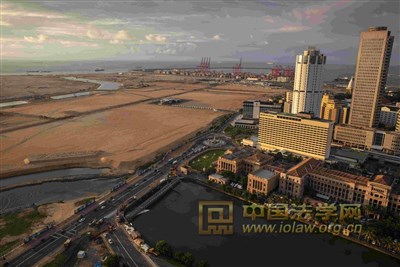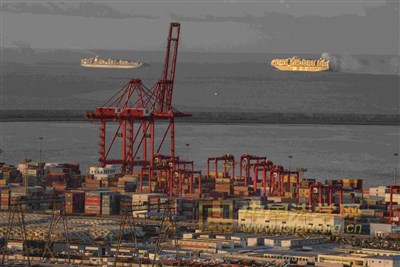 字号:
字号:小
中
大
Editor's note: Liao Fan is a professor of law at the Institute of International Law at the Chinese Academy of Social Sciences. The article reflects the author's opinion, and not necessarily the views of CGTN.
The Belt and Road Initiative (BRI) is making great progress and serving as a name card of China's foreign and regional policy in the new era. By 2018, the volume of trade in goods between China and BRI countries had exceeded five trillion U.S. dollars.
Meanwhile, Chinese outbound foreign investment in BRI countries has exceeded 60 billion U.S. dollars, creating more than 200,000 local jobs. Together with the notion of building a community of shared future for mankind (CSFM), the BRI has become a telling example of Chinese wisdom contributed to the world.
The BRI aims at building a new platform for international cooperation and creating new momentums of shared development. For this, it emphasizes on policy, infrastructure, trade, and financial and people-to-people connectivity. These "five connectivities" shed much light on understanding the BRI comprehensively.
Policy connectivity is of fundamental significance to the success of the BRI, given that sovereign states remain the most important players in international cooperation and global governance. All countries are equal, no matter big or small, strong or weak.
The BRI is absolutely not something that China imposes on other countries. On the contrary, it calls for voluntary cooperation based on shared interests and values. Thus policy coordination between and among the participating countries is indispensable.
Only through regular information exchange and policy consultation can the participants align their economic growth strategies, macro-economic policies and national development plans. The Belt and Road Forum for International Cooperation, for example, provides a valuable occasion for policy discussion and consultation.

A decoration on a flower parterre reading 'BRF' is pictured ahead of the upcoming 2nd Belt and Road Forum for International Cooperation at Chaoyangmen in Beijing, China, April 14, 2019. /VCG Photo
This is also in line with China's broader principle of achieving shared growth through discussion and collaboration in engaging in global governance.
The importance of infrastructure connectivity is manifest. The word "road" itself is more than enough to show this. The very essence of the ancient Silk Road was to connect the Central Empire with its trade partners through camels and ships.
And the BRI as originally proposed also focused largely on the infrastructure aspect, as can be seen from the proposal for the Asian Infrastructure Investment Bank (AIIB) at roughly the same time.
The potential of BRI relies on the extent of infrastructure connectivity, which will pave the way for increased trade and investment, and more broadly, for BRI countries' economic growth and regional economic integration.
It needs to be mentioned, though, that infrastructure connectivity as it stands today includes not only the "hard" infrastructure such as roads, railways, ports, oil pipelines and telecommunication networks, but entails the development and matching of "soft" infrastructure, e.g., cooperation mechanisms, operation systems and management models.
Understood more broadly, it can even include a shared understanding and recognition of essential legal principles and rules, which are of paramount significance for the security and stability of cross-border trade and investment.

The Colombo Port City project is seen jutting out into the ocean that will eventually be 65 million cubic meters of sand in Colombo, Sri Lanka, November 8, 2018. /VCG Photo
In this sense, the two newly established international commercial courts under the Supreme People's Court are a big step forward. They are expected to play an active role in resolving BRI-related disputes and improving the global credibility of the Chinese judiciary.
The essence of trade connectivity is free trade, which serves as a cornerstone of today's multilateral trading system with the WTO at the core. As the world's largest trading country, China is willing to maintain and strengthen trade relations with its trading partners including BRI countries.
Free Trade Agreements (FTAs), among other things, can play a meaningful role in this regard. By applying zero or near-zero tariffs and substantially eliminating non-tariff barriers within the covered area, FTAs benefit all the participating countries. China has effective bilateral FTAs or investment treaties with many of BRI countries.
Finance is said to be the “blood vessels” of the real economy. The significance of finance in the modern world cannot be overemphasized. Financial connectivity is thus an integral part of the BRI international cooperation.
The establishment of the AIIB in 2014 was exactly intended to reduce the gap in the Asian infrastructure funding. Together with the Silk Road Fund, it has offered a new avenue of infrastructure investment funding and injected the necessary “blood” into many BRI projects. But financial connectivity means more than that.
It also entails the freer movement of capital across the border, easier access to financial services in other countries, and in particular, increased use of local currencies in cross-border payment and settlement.

The Colombo deep sea port is seen as container ships move along the ocean in Colombo, Sri Lanka, November 20, 2018. /VCG Photo
The latter is necessary to reduce the risks associated with an exclusive reliance on a U.S. dollar-centered financial system for funding. Given the size of China's economy and volume of trade, the Chinese yuan has much potential in this regard.
Last but not least, people-to-people connectivity is indispensable for the success of the BRI in the long run. Without the understanding, acceptance and cooperation on the part of the local people and communities, an overseas project can hardly succeed. And people only accept and engage with other people when they get to know them better.
It is thus imperative for BRI countries to have more exchanges at all levels and in various fields. Educational exchanges, scholarships and joint research, for example, prove to be an effective way of enhancing mutual understanding, fostering cultural identity and establishing common values.
To a great extent, this is also an integral part of the so-called “soft power” of the relevant countries. In this regard, the notion of CSFM is of particular significance, and its potential in promoting the BRI should be further explored.
FROM:CGTN




